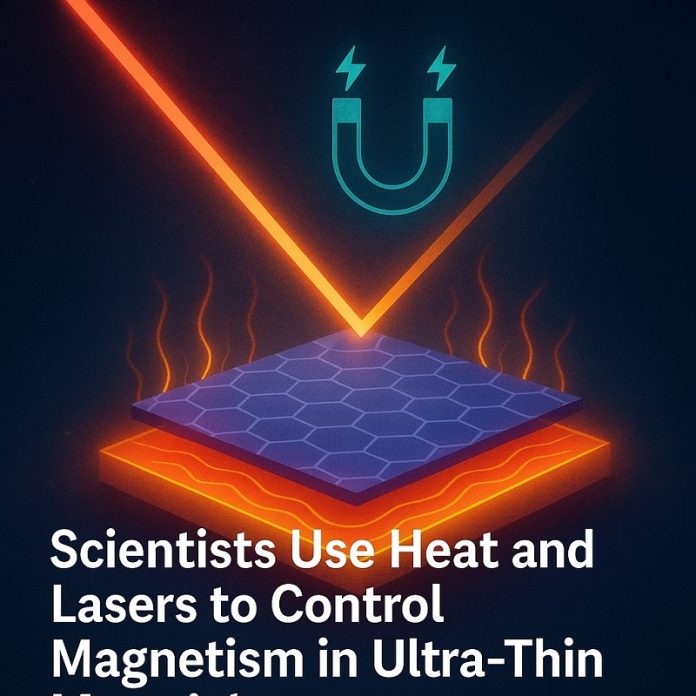
In an exciting breakthrough, scientists have found a new way to use heat and laser light to control magnetism in ultra-thin materials.
This discovery could lead to a new generation of super-fast, energy-efficient data storage devices that work without traditional magnetic fields.
The research was led by scientists from the University of Exeter and is published in Nature Communications.
It focuses on two-dimensional (2D) materials, which are made up of layers just a few atoms thick.
These special materials have unique properties, including very low heat conductivity and unusual ways of spreading heat.
Usually, heat is seen as a problem in electronics because it can damage components or make devices less efficient. But the Exeter team turned this challenge into an opportunity. They used heat—created by precise laser pulses—to control magnetic properties at incredibly fast speeds and with amazing accuracy.
By sending out quick bursts of laser light in one color to heat the material and then using another color to measure changes, the team could track how the temperature and magnetism changed in real time.
They achieved timing accuracy down to femtoseconds (one millionth of a billionth of a second) and could observe changes in areas smaller than a human hair.
One major breakthrough came when the researchers adjusted the thickness of the magnetic layers in the material. This made the heat spread faster and allowed the magnetic properties to recover more quickly. In simple terms, they found a way to make magnetism “bounce back” faster after being changed by a laser.
This opens the door to developing ultrafast, laser-controlled memory devices. These devices wouldn’t need external magnets to store information, which means they could be smaller, more reliable, and use less energy than current technologies. They would also be non-volatile, meaning the data stays safe even when the power is off.
Dr. Maciej Dąbrowski, who led the study, said, “This research opens up exciting possibilities for designing future technology that uses heat in smart ways. We showed that 2D materials can be used for incredibly fast magnetic memory and could even help with future quantum technologies.”
In summary, this discovery could lead to a future where computers and smartphones store data much faster, more efficiently, and in a smaller space—all thanks to the clever use of lasers, heat, and ultra-thin materials.



